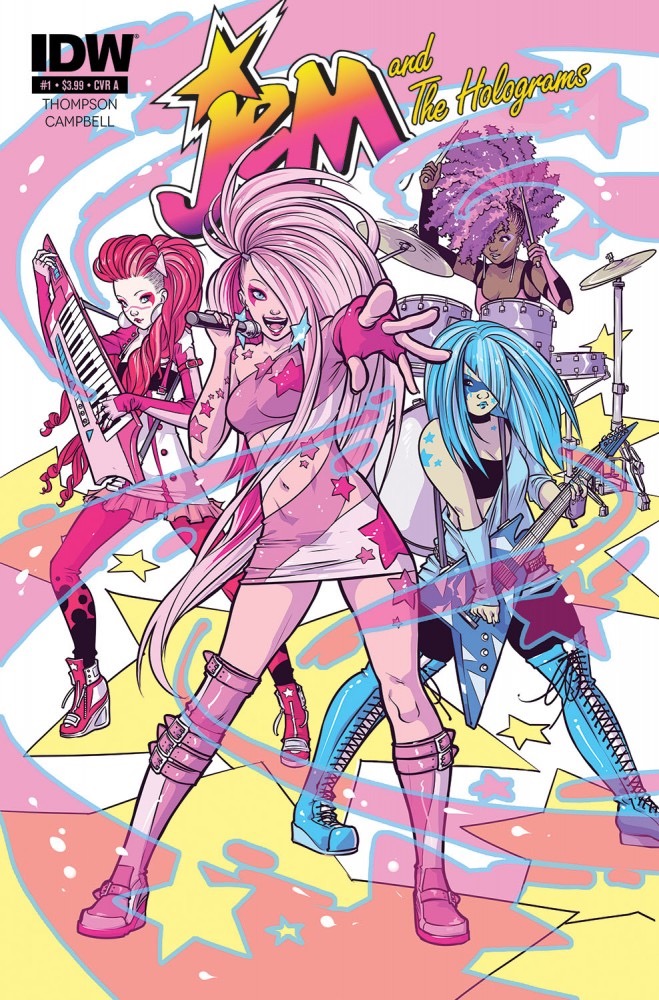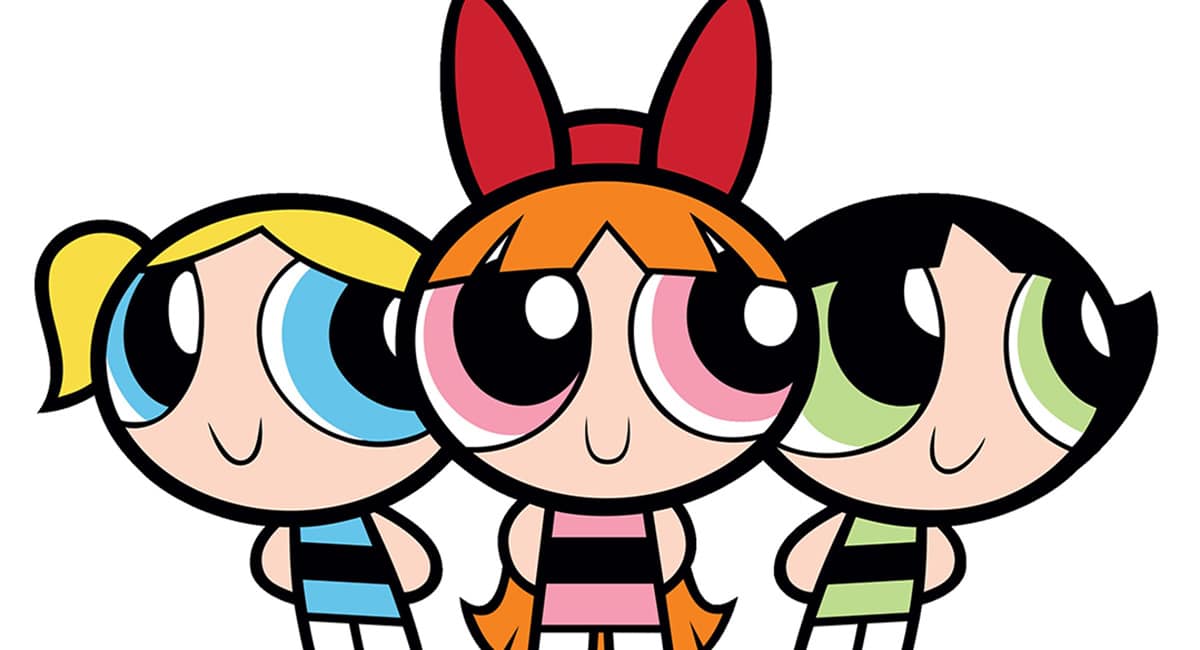We’ve been writing quite a bit in the last year about the slow death of comics media, and one of the reasons is that it’s hard for a small, passion run site to compete with…the New Yorker? Here’s a think piece on the Jem and the Holograms comic by Stephen Burt whose bio tells us he’s “a professor of English at Harvard. He is the author of several books of poetry and criticism, including Belmont: Poems.” And the piece is an insightful examination of what the comic says about gender identity, feminist theory and comics, while respectfully interviewing creators Kelly Thompson and Sophie Campbell.
Like all comics, “Jem” asks us to care how it looks. Its characters have to care: they are, and want to be, performing artists. But they care, as well, about playing their instruments and managing the band’s finances (at least Jerrica does—that’s a plot point, too). Some are more femme than others; none look butch. Nowhere is it suggested that any skill is, or was, reserved for men; nowhere does looking girly make anyone less-than, or dependent, or more likely to be judged only on appearance. And while all of the characters look great, they never look like one another, nor do they conform to Hollywood assumptions about who should appeal to whom. Of eight girls in two bands, four are clearly nonwhite, and others might be. Kimber—the flightiest, girliest Hologram, with the longest, most labor-intensive hair—only dates girls; nobody thinks that’s a problem, nor does anybody think it odd that she falls for someone with Stormer’s body type. The racial diversity comes from the TV show (created by Christy Marx, who also wrote episodes of “G.I. Joe”), but the rest of these choices come from Thompson and the first artist to work on the series, Sophie Campbell.
This level of writing is hard to compete with, no question. But in a larger sense,. congrats to Kelly and Sophie for putting out a strong book that scholars can take seriously while kids can read for entertainment.








Heya guys– I’ve been getting back in to this site recently after a media break, and the first line caught my attention (which… it was supposed to. so… good job?) But because I’ve been on hiatus, I’m a bit confused about what it’s supposed to mean. Can anyone point me in the way of some articles that talk about comic media dying?
In regards to the comic itself– I’m satisfied not only with every issue I buy, but with the choices made in the comic at large. It’s a lot more cost-effective and safe to reboot a series as a comic than as a full cartoon series, so seeing Hasbro test a new take on an outdated property is refreshing. What I enjoy the most about the series is how confident it is– there’s an assortment of visual and narrative diversity that the original sorely lacked (and in retrospect, to contemporary eyes, was just about the glitteriest piece of wonderbread with crisco on it that ever did see animation cel. That’s in diversity and character definition, not necessarily race. :P). And it’s normal, used as gracefully as white-default or cis-gender narratives are in other media. But even deeper than skin level, it’s entertaining and well presented and feels like something I want to be reading every week instead of every month. That these characters are so magnetic have more visual diversity but in a matter-of-fact-way, instead of what I’m sure the original property would (and did) translate as preachy-specialness or very special episodes…. says a lot more about where the industry as a whole can go right now, and where it could be in a few years. Buuuuuut, I’m comparatively less experienced and at the core optimistic.
is exactly why the comics media is dying
^lmao at pissbaby anon
Comments are closed.